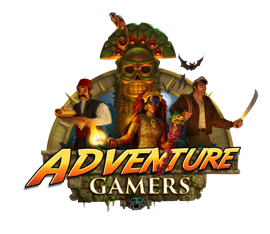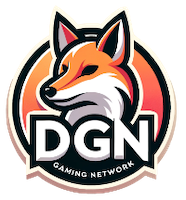Review for Caravan SandWitch
Game information
Caravan SandWitch is in many ways delightful. It takes place on a human-settled exoplanet called Cigalo, where your character grew up. However, Cigalo is something of a dying world, ruthlessly exploited by a company called the Consortium, which is apparently building a Dyson sphere about the local sun and has strip-mined the world for resources. You, like most of the inhabitants, have emigrated to Space City (run by the Consortium) for better opportunities. When you receive an emergency message from your sister Garance, whose spaceship has apparently crash-landed on Cigalo, you return to try to find and rescue her.
The main gameplay in Caravan SandWitch involves navigation puzzles. You encounter structures across the planet which you explore; quite often getting to some areas involves accessing a switch to turn on a cable that opens a door or similar handiwork. So a lot of time is spent, in essence, parkouring about, climbing over rocks and figuring out how to get to the next important location in a structure. Fortunately “parkouring” isn’t a difficult action challenge, it’s mostly looking for viable paths to get where you need to go and triggering the occasional jump. (L33T platformer skills not required.)
You also spend time driving across the landscape in a van, which does get you from one location to another a lot faster than running, and is necessary in any event. Over the course of the game you upgrade your van with tools like a scanner that can detect useful objects, and a grapple that allows you to open doors and pull out buried items. You can also build a pulley that lets you use ziplines (and zipline along the grapple’s cable). The scanner can be upgraded to hack locked doors, and the grapple to energize items that don’t have their own power sources.
One welcome feature is that, through the ESC menu, you can always “return to garage” in the town, which saves a lot of time when a quest is complete.
Upgrades are performed by collecting “components,” which come in common, uncommon, rare, and extraordinary ratings (a pretty common game trope), and which can be collected all over the map. They glow, so when you encounter them, they are fairly easy to see and grab. But getting to them isn’t always simple, and completing the suite of all upgrades will take you into the latter part of the game.
There’s a diverse suite of characters to encounter, in four categories: the citizens of the town where you grew up, including your father; human nomads of the desert; frog-like beings who seem to be the indigenous inhabitants of the planet; and intelligent robots. There’s a fair bit of dialog with all, but not the “choices matter” kind of dialog; they impart backstory or advance the narrative, and they quite often act as quest-givers. Dialog is, for the most part, well-written, though there were some moments when I wondered whether something was lost in translation (the developers are French).
The quests are the primary support for story in the game and some are very much along the main spine of the narrative. Initially, you spend a lot of time knocking out jammers that the Consortium have spread across the map in order to be able to see the whole map. You can enter jammed spaces, but can’t see the map there, so you don’t know where the roads are. In mid-game, you are mostly focused on grabbing components to improve your capabilities; toward the end-game, you work to rebuild the “receptacle” (fast travel) network, that will allow you to get to your sister’s spaceship. Quests support all of these objectives, but there are two kinds of side quests. Non-player characters give you certain missions – some quite entertaining – which do not persist beyond your next upgrade. These missions are extremely rewarding in terms of components and completing them will save you a lot of grind, so they are worth finishing before you commit to the next upgrade (and the game is good about warning about this). Other quests are also from NPCs, but do persist through the end-game, even if not completed. The tasks are pretty diverse in nature, which I appreciated; they’re not all fetch quests.
Caravan SandWitch's locales are quite beautiful, at least outdoors; the developer describes them as “Provence-like,” which I question. There are some green areas here, but a lot of it is desert, which exists but is not the norm in a Mediterranean environment. The indoor settings are mostly along the line of “abandoned industrial installations”, which did get old after a time.
The characters are not low-poly, but they are low-texture. Texture load is often more of a constraint on performance in a 3D game than poly count, and the characters are stylish if less detailed than I would have preferred. And their animations are excellent – diverse and believable motions – and I never observed clipping or skating issues. Also, the controls work well. I played both using a controller and mouse-and-keyboard. Surprisingly, I found mouse-plus-WASD works better for this game, which is unusual for a 3D game where player motion is critical (controllers are usually better for that).
There is no voice acting, and surprisingly little in the way of ambient environmental audio. There is easy-going music providing a bit of sustenance as you play; nothing remarkable, but at least there’s a diversity of audio loops, so it never gets too repetitive. There are of course the usual audio stings for action, as well as footsteps and the sound of your van moving and accelerating.
I do have a couple of criticisms. First, this game really ought to hold the player’s hand more. One issue is that quest progress is NOT a series of checkoffs, or a new objective unveiled when an old one is reached. Instead, associated with each quest is a Toast stream (the game’s social media) with characters commenting on what’s happened. This is obtuse; it is not always obvious what’s the next thing you need to do, which could be solved with more explicit guidance. Also, there is a “show on the map” feature, which OFTEN points you to some location important to the quest, but not necessarily where you need to go next. (A recent – by which I mean a few days ago – update from the developers improved this, but it’s still not great.) If you find yourself stumped by the receptacle quests, go here, but there aren’t a lot of online guides for this game if you get stuck elsewhere.
In addition… I found the ending rather disappointing. Probably shouldn’t say more, for spoiler reasons.
I spent more than 20 hours with Caravan SandWitch and enjoyed it; maybe not ecstatically, but enough to keep me engaged and wanting to play more.
WHERE CAN I DOWNLOAD Caravan SandWitch
Caravan SandWitch is available at:
We get a small commission from any game you buy through these links (except Steam).Our Verdict:
Though certainly not a conventional adventure game, Caravan SandWitch is fortified by interesting characters and an overarching, quest-driven tale. Puzzles involving navigation may not be everyone’s cup of tea, but there’s no combat, no death, and no timed challenges; frustrating at moments, but pretty chill. You will find it intriguing if you’re up for exploring and navigating landscapes with chunks of story on the side.




























